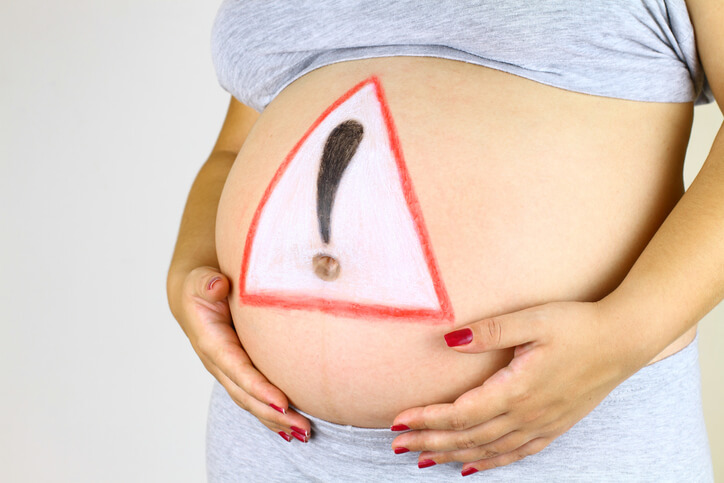
“High-risk pregnancy” is a term used to describe a pregnant woman who has one or more factors that may put her or her unborn baby at risk for complications. This classification is commonly attributed to women who decide to become pregnant at an older age, around 35 or older, where having a baby has been deemed unhealthy. However, there are also many pre-existing conditions that can put a woman into this high-risk category.
Perhaps you’ve heard the slang term, “Age ain’t nothing but a number!” Although, in this case, when it comes to getting pregnant and having a healthy pregnancy, it can matter. As women get older, and are placed into this advanced maternal age category, the probability becomes higher for these women who become pregnant to be at a higher risk for developing various medical conditions that can arise during pregnancy.
It is important to note that while a pregnancy may begin as normal, research has shown that women who are 35 or older have higher chances of developing these complications during pregnancy, such as being pregnant with multiples, delivering the baby prematurely, preterm labor, developing conditions such as placenta previa and preeclampsia, and even suffering a miscarriage. Due to the possible complications of a high-risk pregnancy, the gynecologist may also make special preparations for the birth itself, i.e., scheduling a cesarean section (C-section), to keep both mother and baby safe.
A woman’s age has less to do with the health of the baby, versus the health of your body. For example, a 40-year-old women could be healthier than a 20-year-old, biologically. Doctors say that age by itself should not be major criteria for a high-risk pregnancy, and therefore it really also depends on whatever else is going on with the woman’s body and their overall health.
Pre-existing Health Factors That Can Cause a High-Risk Pregnancy:
- Obesity
- Gestational Diabetes
- Heart disease
- High blood pressure (Hypertension)
- Seizures
- Cancer
- Kidney problems
- Thyroid issues
- Autoimmune diseases such as Lupus
- Fertility issues
- Problematic past pregnancies (miscarriages)
- Some genetic conditions, such as blood-clotting disorders
Regardless of the reasons why a pregnancy may be considered high-risk, a woman can expect to have more visits to the OB/GYN for close monitoring, than a woman who is healthy and has not been classified as high risk.
Close observation and careful monitoring of these women with high-risk pregnancies is of upmost importance to avoid further complications.
Even though “high-risk” sounds menacing and worrisome, there’s no reason to panic. It is important to recognize that the term “high-risk” is not meant to cause you to worry, but rather, it’s a way to ensure that you receive more specialized attention during your pregnancy. Also, a high-risk pregnancy diagnosis is not meant to foreshadow that you will have problems with your pregnancy. In fact, most women who end up becoming pregnant after age 35 and even into their 40s, who are considered high-risk, give birth to healthy babies with no complications.
However, this doesn’t mean that you shouldn’t think about steps you can take to maximize you and your baby’s health during your pregnancy by talking to your gynecologist about high-risk pregnancy, what to expect, and how at risk you may be. If your doctor has characterized your pregnancy as high-risk, ask them to explain to you what that means, and what the specific factors that put you into that category entail.
To learn more about high-risk pregnancy, call University OB/GYN Associates at (315) 464-5162 to request an appointment or request an appointment online.



